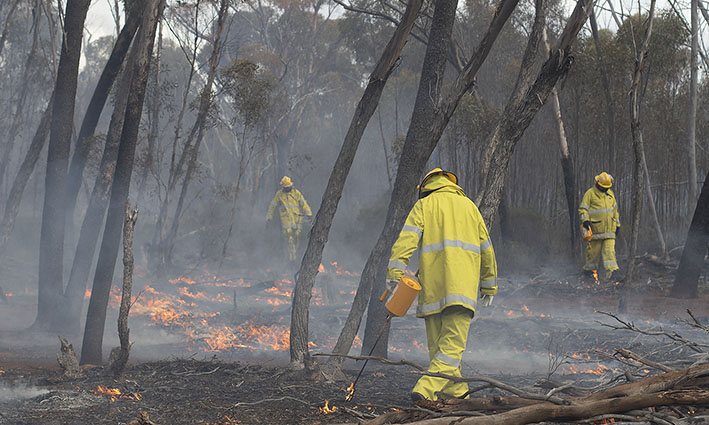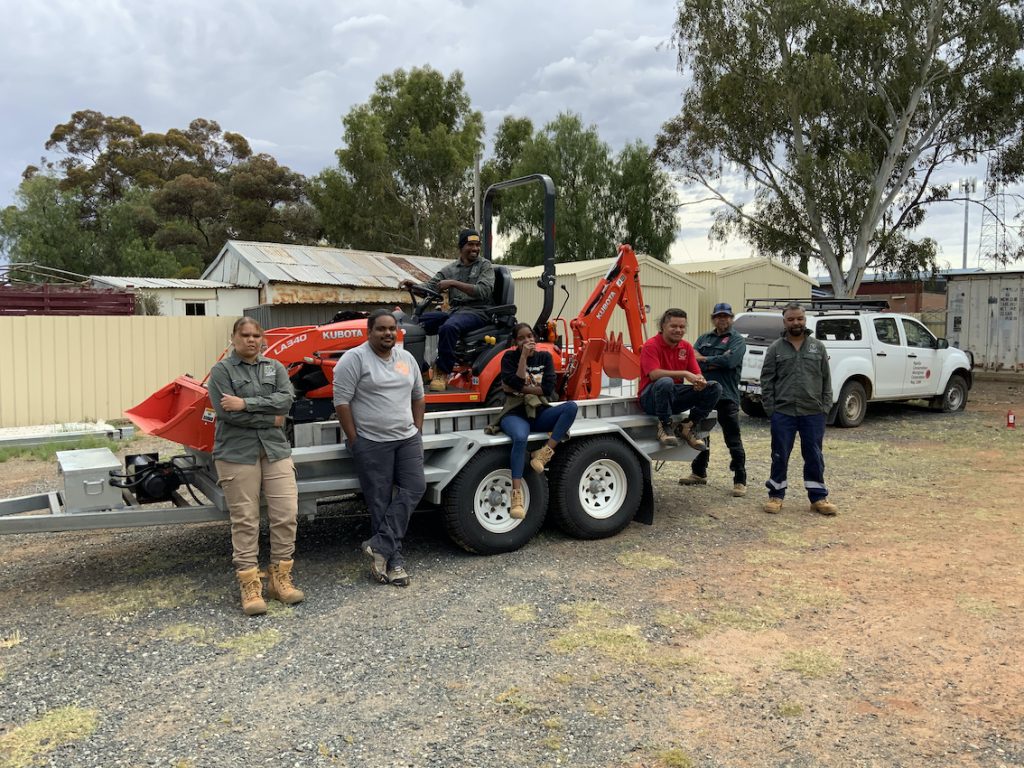Foundation for Rural & Regional Renewal (FRRR)
Jaithmathang TABOO is an Indigenous organisation working on Country in North East Victoria to support regeneration in the landscape’s recovery following the 2019/20 bushfires, and to support cultural healing.
They were awarded a $120,000 grant in April 2022 (to be paid over three years) from FRRR through the Bushfire Recovery Fund, which is supported by the Helen Macpherson Smith Trust and the Sidney Myer Fund. The funding was for a program of annual cool burns and to work with key environment and government stakeholders to share learnings.
The project, titled ‘Beginning the journey to cultural healing on Jaithmathang Country’, specifically aimed to build the capacity of the organisation by contributing to the cost of employing a Jaithmathang descendant for three years to project manage the cool burning program in the Falls Creek region. It also aimed to help in establishing ongoing partnerships and engagement with key stakeholder organisations that can support Jaithmathang to operate sustainably into the future as custodians on Country.
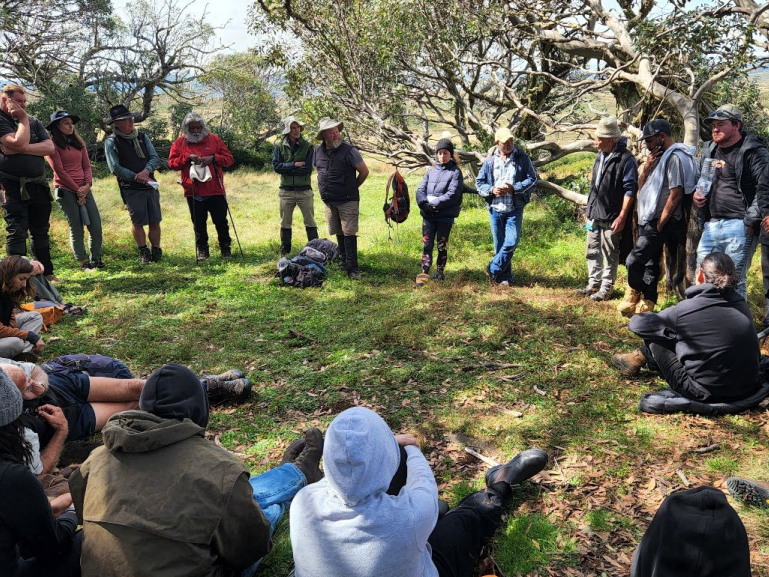
The organisation recently submitted an interim report about what they did in the first year of funding. FRRR’s Program Manager, Danielle Griffin, says the group should be really proud of what they’ve achieved in the first year.
“In year one, Jaithmathang has successfully engaged with the targeted government, First Nations and subject matter expert stakeholders to support their foundational return to Jaithmathang Country. As the Jaithmathang Elders belong to the stolen generation and were removed from Country, it is a privilege to be involved in this significant work to build their capacity for returning to Country and participate in local recovery through disaster management and the intrinsic healing practices that will support Indigenous land and people. The tripartite partnership is a great outcome for year one of this grant,” she said.
The following is an extract from the report, which provides more detail on the background and the partnerships created to date.
The countryside of Bimble is our age-old family tree and it reflects in its rich and diverse lands, the history and heritage of the Jaithmathang Original Peoples. It is our most ancient landscape and it is beautiful and life giving. Mung, Tyer and Buller and all creatures and living things created by Bunjilla are respected and form part of the interconnected ecosystem where each is essential to one another. Our women, men and children are connected through birth right to our Bunjilla Dreaming Bimble, where we reconnect with our spiritual origins and renew our sense of belonging and meaning.
Cultural burning, or the use of fire as a tool for managing landscapes, was an intrinsic part of the connection to country for many Indigenous cultures. Cultural burning is a deeply cultural and spiritual practice that played an important role in the relationship between Indigenous people and our land. It was a tool for managing the land, communicating with the spirits, and maintaining a strong connection to country.
Despite the worsening severity of bushfire activity in Australia, the recognition and adoption of meaningful cultural cool burning as part of a defensive strategy is still in its infancy in current land management practices. We have developed strong partnerships with private landholders and government to achieve the access, consent and participation from all stakeholders required to build an effective approach to fire management, underpinned by traditional knowledge and practices. However, resistance to the introduction of more traditional fire management practice is problematic and will require ongoing work, coordination and support.
Jaithmathang TABOO, Nallawilli Bunjil and CSIRO have creating a tripartite working group to reintroduce traditional cultural burning practices and Indigenous fire knowledge into modern fire management. Nallawilli Bunjil is a commercial drone surveillance and data modelling organisation led by Jaithmathang Elder Roderick McCleod, which provides expertise in virtual modelling to capture real time data about a landscape, including temperature, weather conditions, and for the purposes of fire management, fuel hazard. All parties aim to enhance the health of the land and its Indigenous people.
The outlined project supports developing Monitoring, Evaluation and Research (MER), contributing directly to the Victorian Traditional Owner Cultural Fire Strategy. Jaithmathang TABOO has agreed to work closely with neighbouring nations, including Gunaikurnai Land and Water Aboriginal Corporation. The project will coordinate with the Department of Environment, Energy Climate Action, Federation of Victorian Traditional Owner Corporation, Country Fire Authority and Parks Victoria as priority stakeholders of the project.
CSIRO has developed a bushfire model called Spark, an end-to-end interactive 3D processing tool to predict fire behaviour, based on existing fire spread models. The system has been developed with the capability to be customised for use in risk management, planning, fire spread, research, prescribe burns and fire response.
Spark ingests fuel availability, load, topography and gridded weather based on an ignition point or ignition pattern. It then simulates the temporal and spatial extent of the fire, providing mitigation and contaminate strategies for ongoing bushfires. The project will pilot MER to help start building an accurate cultural burn model for eucalypt forests, undertaking fundamental field observations pre, during and post, documenting on country and operational cool burning methodology.
In reducing the occurrence, intensity and severity of wildfires, cultural burning has an array of interconnected objectives. These include cultural asset protection, habitat protection, biodiversity recovery, fuel reduction, waterway restoration and bush regeneration.
The important role that cultural burning can play in healing and improving the long-term health of country is increasingly being understood, and resources that support cultural burning such as the Traditional Owner Cultural Fire Strategy, support the expansion of cultural burning in Victoria.
The third phase will be to plan and conduct Cultural mosaic burns within the pilot area, sampling major vegetation, typography, weather /moisture and escape risk assessment. A project report will be compiled by CSIRO comparing cultural cool burn management to standard practices today, outlining the potential benefits of Indigenous Fire Practitioners.
On Ngadju Country
Late 2019 / early 2020 saw 13 bushfires devastate approximately one million hectares of Ngadju country in southern WA, including large tracts of the Great Western Woodlands, the largest temperate woodland remaining on Earth. It is estimated that the extent of the area of Ngadju country impacted by the fires was equivalent to about half the size of Victoria. The bushfires burnt tracts of old growth forest, overran spiritual sites and destroyed the habitat and nests of threatened species.
Ngadju Conservation Aboriginal Corporation (NCAC) works with the Ngadju community to increase the understanding of conservation and land management opportunities and assist in building capacity to achieve them. Ngadju Rangers use cultural knowledge, refined over thousands of years, to care for the environment and work on Country to manage fire, feral animals and weeds, and to protect mijalkarru (rockholes), the Granites, water places and the flora and fauna of the Great Western Woodlands and the Nullarbor plains.
Following the fires, NCAC received a $25,000 Strengthening Rural Communities grant funded by IKEA Australia through FRRR to help the Ngadju Rangers to both repair the damage and undertake work to protect the environment and cultural sites from the devasting impact of the bushfires. Their approach involves a detailed program of cultural burning to protect sites, old growth and water trees. The mosaic effect of landscape-scale burning benefits biodiversity by reducing the extent and severity of large-scale fire and creates a range of vegetation growth stages and habitats that suit different species. Prior to a burn, Ngadju Rangers and Elders walk through the planned burn site to survey for cultural and environmental values. However, access to the tracks leading to these sites were heavily impacted by the recent fires and also from years of neglect.
NCAC used the grant to commission a specially fabricated trailer with hydraulic tipping for use with their tractor to help the Rangers clear the tracks, enabling safe access to undertake their important cultural and environmental work. This improved access will also allow other Ngadju community members to attend sites and undertake voluntary maintenance and management, which will help them reconnect with Country and transfer knowledge across generations.
Helen Langley, NCAC’s CEO, said that the project wasn’t without its challenges.
“The challenge was the amount of time it took for the trailer to be fabricated and then wired. It took eight months for the trailer to be built and we have only recently received delivery. We are developing Safe Operating Procedures and have organised training for the Rangers so that we can commence clearing tracks and making fire breaks around areas of mosaic burns.
“We are proud that the Ngadju Rangers can now access their Country for cultural burning and they can use machinery to make fire breaks. The project has assisted in rebuilding the Ngadju community and provided healing for community who are mourning the loss of Country.”
For more inspiring stories like this, head to our FY 2021/22 Annual Review.
Grants available for first responder organisations in places impacted by Black Summer bushfires
Porepunkah was just one of many communities that was badly affected by the 2019/20 bushfires, but a recent grant is helping ensure that the local Country Fire Authority (CFA) brigade has the resources it needs to better prepare and serve the community when the next emergency occurs.
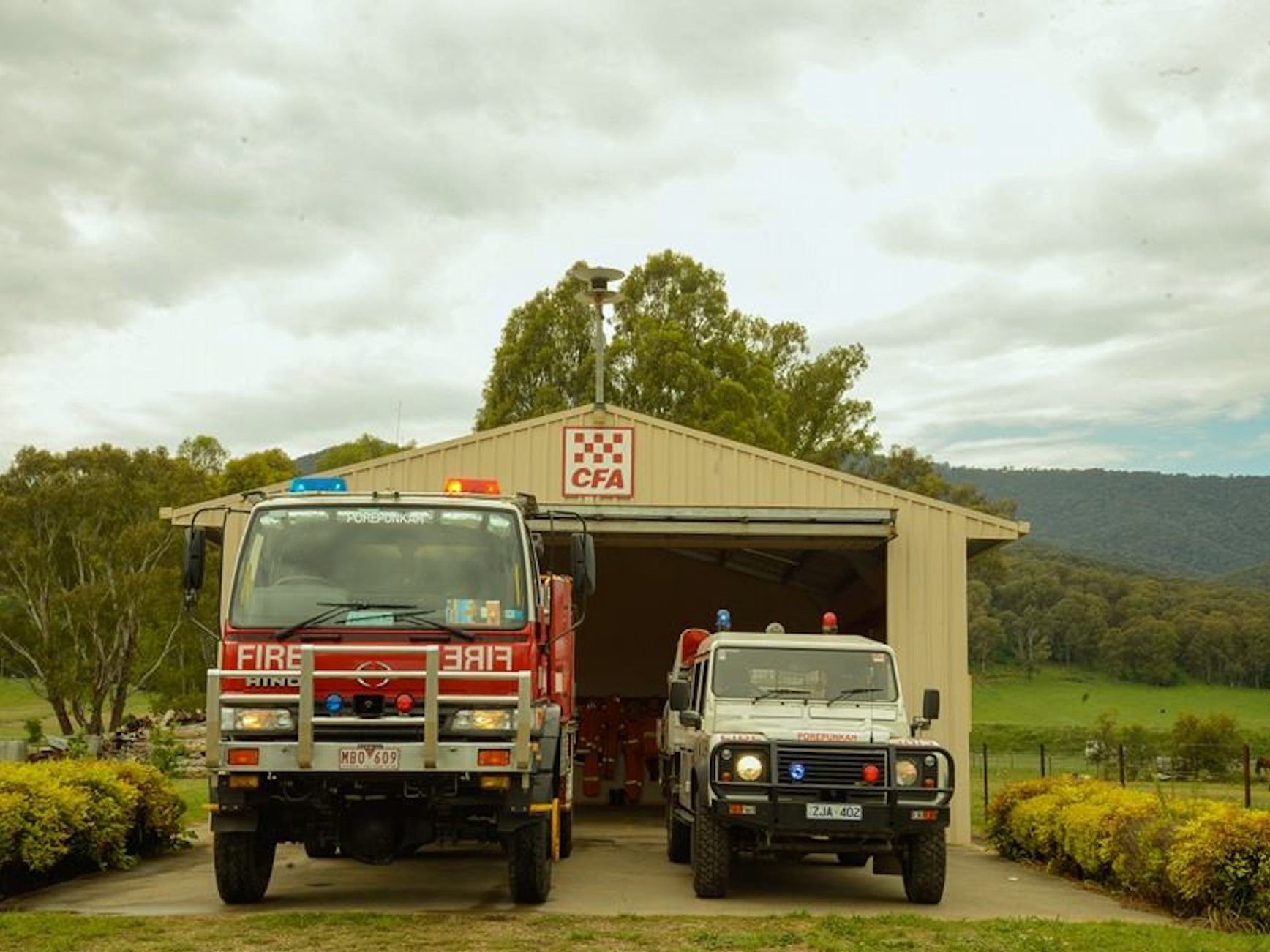
Porepunkah CFA was awarded a $10,875 grant through FRRR’s Volunteer Emergency Services Fund to support volunteer training and wellbeing through IT training technology and appliance upgrades for the kitchen at the Porepunkah CFA Shed. Porepunkah was one of 19 emergency services to share in $311,049 in grants, through the Volunteer Emergency Services Fund’s first round of funding.
Renee Lee, Porepunkah CFA’s Secretary said the funding will also help the group to facilitate community outreach during non-disaster times.
“While our volunteers take pride in our role and are committed to make Porepunkah a safer and better place for the community, we cannot express how much this grant means to us. As volunteers, it means recognition for our time and sacrifices.
“In addition, the grant approval came in a timely manner as it will uplift the spirit of community as we are faced with the numerous lockdowns,” Ms Lee said.
Made possible thanks to a significant private donation, the Volunteer Emergency Services Fund provides grants to local volunteer emergency services groups and first responder organisations in eligible fire-affected communities across the Australian Capital Territory, New South Wales, Queensland, South Australia, Tasmania and Victoria.
FRRR is encouraging local volunteer emergency services groups serving rural communities affected by the 2019/20 bushfires to apply now for the second round of grant funding to support their recovery needs and/or strengthen their emergency response capabilities ahead of the 2021/22 bushfire season.
Grants of up to $25,000 are available to meet local agencies needs, and we want to encourage groups who may not have a large project in mind to consider making a small grant application of up to $6,000 to be better prepared with small essential equipment, i.e. Go bags that might contain torches, fire blankets and traffic wands. At least $100,000 in funding will be provided to meet such essential requests.
Danielle Griffin, FRRR’s Philanthropic Services Manager – Corporate, said that with this summer’s bushfire season fast approaching, first responders should feel confident in their preparedness and volunteers should feel supported, especially those in regions that are still recovering from the 2019/20 bushfires.
“Preparing for future disasters and adapting to changing conditions after a disaster are integral parts of the recovery process. In practical terms, preparedness can mean upgrades to infrastructure and equipment and providing up-to-date training, which can have a big impact on the security and safety of first responders.
“These grants can fund important projects to care for the mental health and wellbeing of volunteers that generously give their time to support and protect their communities.
“The Volunteer Emergency Services Fund is specifically designed to support the disaster recovery needs and priorities of first responder organisations at a local level, and we look forward to funding initiatives that will assist these vital community members and services,” Ms Griffin said.
The Volunteer Emergency Services Fund grant program is now open. Applications close 5pm AEDT 20 October 2021, with grants to be announced November 2021.
For more information, visit FRRR’s website – https://frrr.org.au/volunteer-emergency-services-fund-grant-program/.
Support needed now more than ever for communities hit by multiple disasters
Port Macquarie, on the mid-north coast of New South Wales, is just one of many towns reeling from the effects of cumulative disasters. In their case, it began in July 2019 with devastating bushfires that affected many communities across the region. The fires burned until January 2020. Homes, livelihoods and, sadly, lives were lost.
Then in March 2020, COVID-19 hit, decimating visitor numbers and the vital income they bring with them, and restrictions hampered bushfire recovery activities. These cumulative impacts meant many retailers, cafes, pubs, restaurants, tourism and accommodation providers were forced to let staff go or, for some, to close.
In March 2021 – with COVID-19 and bushfire recovery still ongoing – the region was inundated by a one in 100 year flood. Thousands of people were evacuated, and five months later, many have still not been able to return to their homes. Today, pockets of the community are still without electricity.
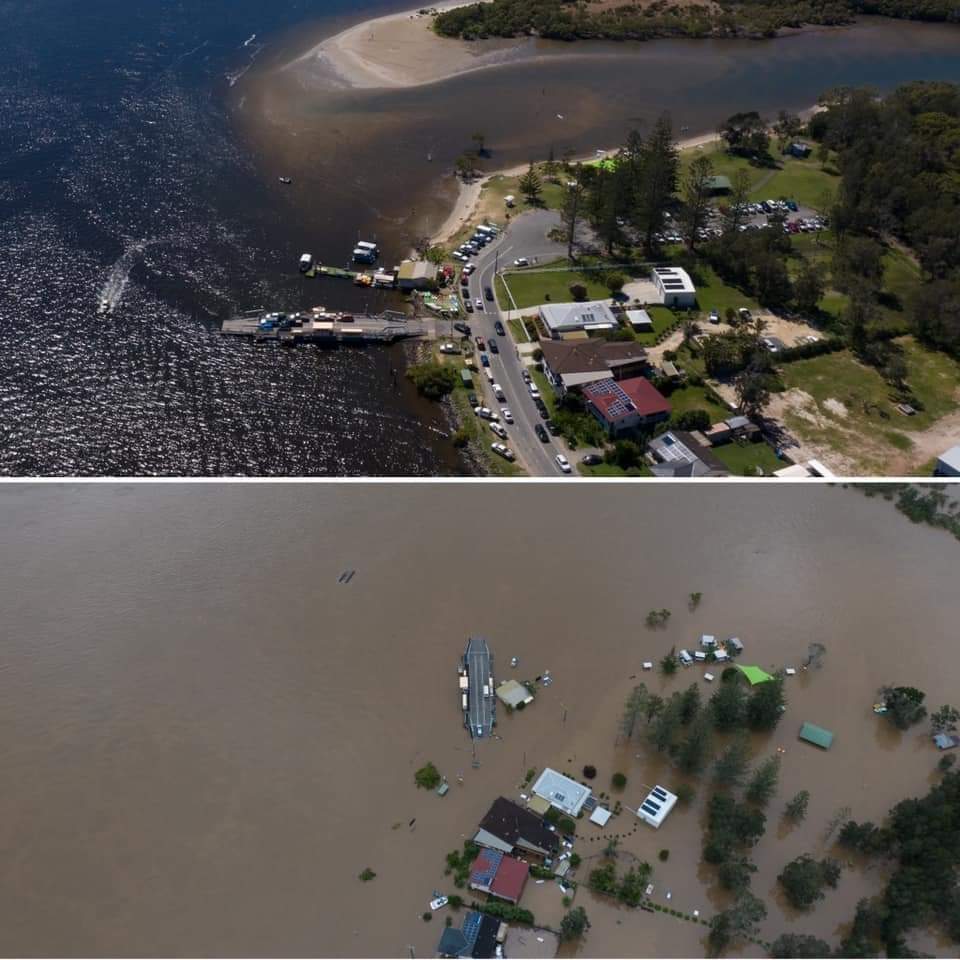
Fewer resources, but more to do
The struggle for small organisations trying to support their community is very real, even in normal times. So, when events like the bushfires, floods and COVID-19 place greater demands on their services, their capacity is challenged. But they fight on!
Make a Difference Port Macquarie (MAD PMQ) is a local support agency helping their community to respond to these events. Over the last year, they’ve had to work through how to do more, with fewer people. When COVID-19 hit, MAD lost their volunteer base almost overnight because most of their volunteers are elderly or retired and are very vulnerable. The pandemic also had a huge impact on the organisation’s fundraising. Like many small community organisations, MAD PMQ relies heavily on events to raise the funds required to deliver their services.
Volunteer Erin Denham said they generally run four or five fundraising events a year but were only able to run one in the last year, and that’s had a massive impact on revenue. MAD PMQ was supported by an FRRR grant that funded the stage for that event and the fit out of their mobile coffee van.
“When we got the FRRR grant, it took so much pressure off us as a charity – we hadn’t been able to run a fundraising event in nine months, and we couldn’t see a way out of COVID-19. The grant allowed us to continue our plan for our projects and support our community.”
As successive disasters have hit the community, MAD PMQ has adapted and expanded its role.
“Our focus has shifted dramatically since our inception,” Erin said. “It was originally homelessness. Now we’ve moved to supporting a wider range of disadvantaged people, so our work shifts and adapts based on the needs of the community and what’s happening around us, like fires or floods. The homeless population is transient, but there are just as many people in the community who need our help that go beyond that demographic.”
When the floods hit in March, their greatest priority was helping to address the immediate needs of those affected by the floods, particularly getting people back in their own homes by supplying white goods such as fridges, washing machines and ovens.
“It’s been a massive effort,” Erin explained. “We’ve raised approximately $50,000 so far, which we’ve since redistributed in white goods and other requests. But it feels like the funding is starting to dry up, and the demand is greater now than it was immediately after the floods.”
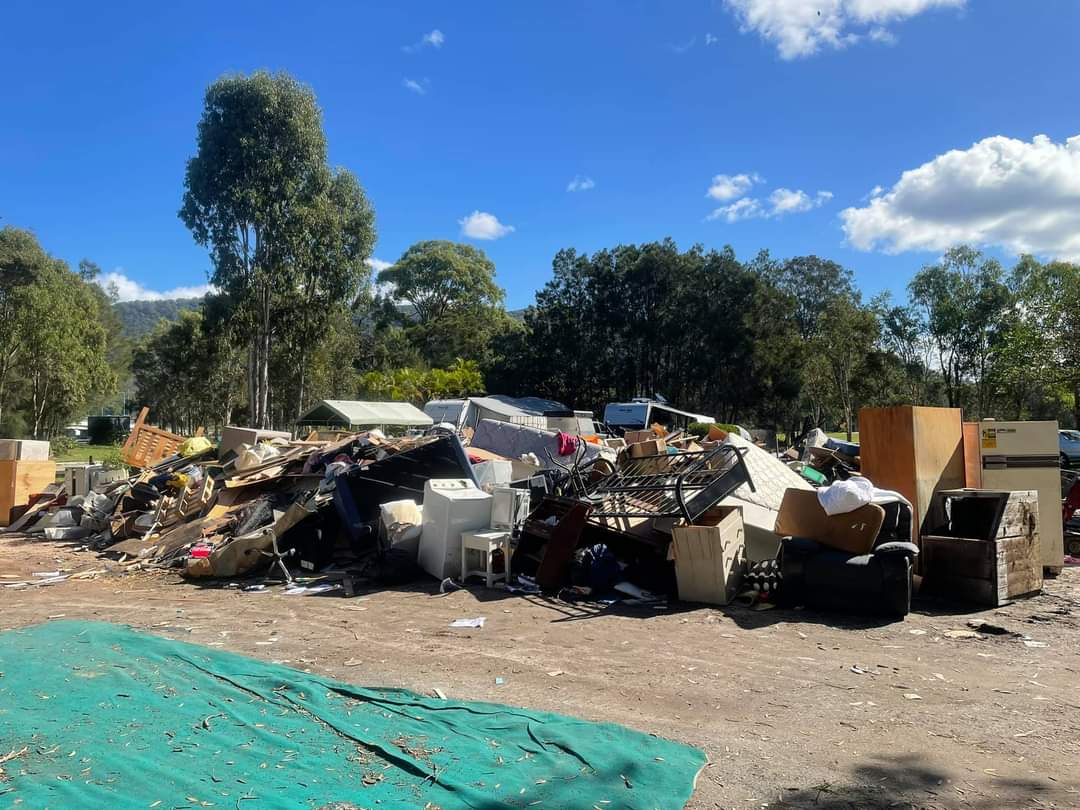
Emerging impacts
In fact, demand for MAD’s services is the highest they’ve ever seen, and Erin says she thinks it will continue to increase as the full impact of the “triple-whammy” of disasters takes effect.
Erin said that while there was lots of help immediately following the fires and floods from external organisations and agencies, the responsibility is now falling on the small organisations within the community to pick up the load and continue to meet the ongoing needs of a community impacted by natural disasters.
“Most of the people provided with emergency accommodation until the end of June or early July are starting to have to move on, and demand for assistance to MAD PMQ is increasing.
“Everyone’s gone back to business as usual, you can’t tell by driving through town that anything happened,” Erin said.
“Just last week we came across a gentleman who is still living in his flood-affected caravan, with no power or running water. His caravan was written off, but he’s got nowhere else to go. We provided him with a generator, so he at least has some power.
“And I’m aware of a 65 year old man who was living in a tent in his back yard, while his wife was in emergency accommodation. They were separated for months after the floods happened. The housing crisis and gentrification are big problems, with people relocating from Sydney, and many people being pushed out of the rental market. And while they might be eligible for grants, often they can’t meet all of the requirements that’s needed and therefore they miss out on funding.”
Erin said that support through FRRR, such as the new Suncorp Rebuilding Futures program, allows community organisations to be responsive in the aftermath of the situation. By offering funding support for charities like MAD, the program will allow them to help residents get back into their homes faster.
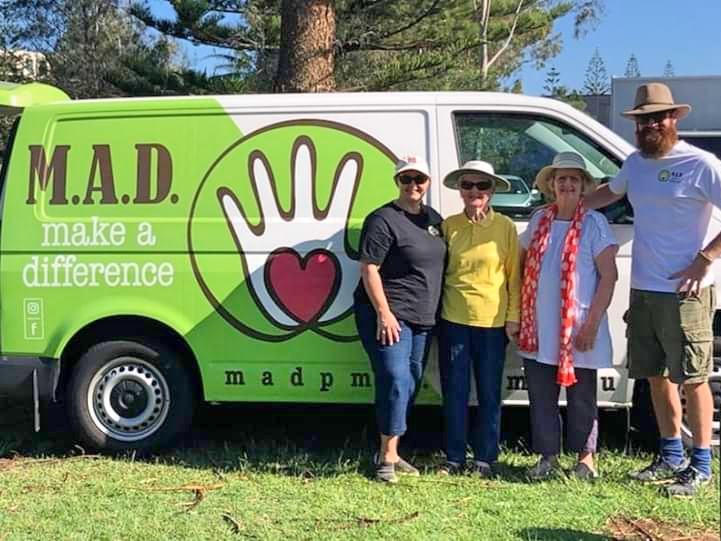
Images: Alex McNaught
Funding awarded for 33 recovery-focused projects
Through its Strengthening Rural Communities (SRC) program, FRRR has awarded $637,908 in grants for 33 initiatives prioritised by local communities to support their recovery from the 2019/2020 summer bushfires.
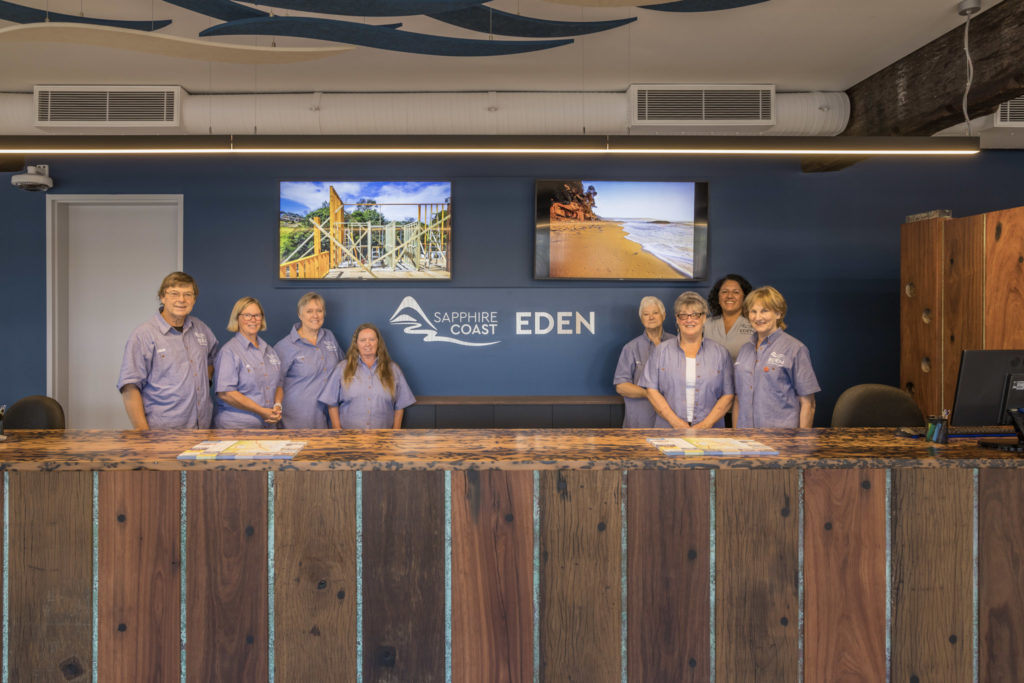
The SRC program’s Bushfire Recovery stream is collaboratively funded and supports projects that are led by local people and address local recovery needs. The grants awarded will help promote the healing and renewal of these impacted places.
In this round of Bushfire Recovery funding, grants range from $2,500 to encourage locals to participate in recovery activities at the Maclean Spring Festival in NSW, through to $25,000 for the installation of local fauna sculptures that will increase connection to place and enhance public spaces in Marlow, Victoria.
Natalie Egleton, CEO of FRRR, said that the Foundation continues to support communities recovering from disaster, because it knows recovery is a long-term process that is unique for each affected place.
“Many impacted communities have faced multiple disasters beyond the bushfires, including COVID-19 and floods. The pandemic has made recovery all the more challenging for these regions. For community organisations, it’s hampered their capacity to deliver services that they would otherwise be providing to help their communities heal.
“Many groups have worked hard to support locals in safe and responsive ways but understandably, local volunteers are pretty worn out. In response, we have awarded a number of grants for projects that will relieve volunteer-fatigue and alleviate the pressures that many volunteer-led groups are dealing with.
“Recovery is a complex process that really hinges on local people coming together to support one another, to share and heal. We continue to see strong demand for projects that provide a safe space for communities to gather and connect by investing in local community assets and infrastructure.
“We are also seeing attention focused on more vulnerable members of the community, with local organisations using grants for projects that address the recovery needs of age-based groups, gendered groups and Indigenous groups,” Ms Egleton said.
Some of the 33 Bushfire Recovery projects awarded include:
- Australian Outward Bound Development Fund Pty Limited, Tharwa ACT – Rebuilding from the Heat – $22,367 – Improve preparedness for future disasters at Australian Outward Bound’s Tharwa site through the renewal of aged firefighting and maintenance equipment.
- Lansdowne Hall Reserve Trust, Lansdowne NSW – Ride on Mower for Lansdowne Community Hall – $5,107 – Reduce volunteer fatigue and increase preparedness for future fires through the purchase of a ride on mower for the Lansdowne Hall.
- Rathdowney and District Memorial Grounds Association Incorporated, QLD – Natural Disaster Preparedness – Electrical masterplan for emergency response facilities – $13,420 – Enhance community activities and support community preparedness for future emergency evacuations by developing an electricity supply masterplan for the Memorial Grounds.
- Kingscote Mens Shed Inc, Kingscote SA – Connection Through Activity for Men Living on Kangaroo Island – $3,683 – Increase opportunities to support local connectedness and social recovery, through restoration of a local historic Wharf Trolley.
- Bemm River Progress and Improvement Association Inc, VIC – Bemm River Men’s Shed Upgrade – Toilet and Kitchen – $16,422 – Boost community recovery and connection through upgrades to the Men’s Shed toilet and kitchen facilities.
In total, this round of SRC awarded $1,589,612 in grants across three streams – Small & Vital, Larger Leverage and Bushfire Recovery. The 112 projects funded will help build the resilience and long-term vitality of smaller remote, rural and regional communities across Australia.
A full list of SRC grant recipients across all three streams of funding is available here.
The SRC program is collaboratively supported by a number of generous donors, which are also listed here.
The current round is accepting applications until 24 August 2021, with funds to be awarded in December 2021.
Grants available for services supporting communities impacted by Black Summer bushfires
A generous private donation of $1 million will fund FRRR‘s new Volunteer Emergency Services Fund Grant Program. The Program will fund volunteer emergency services to support their recovery needs from the 2019/20 bushfires and help them prepare for future challenges.
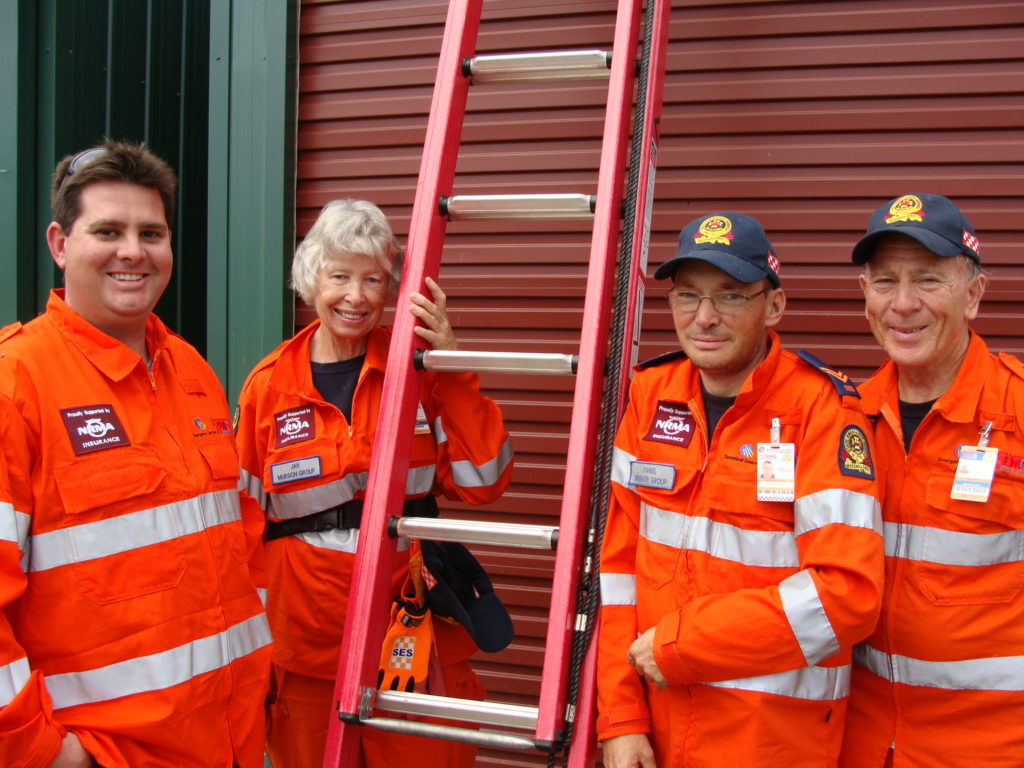
The Volunteer Emergency Services Fund will offer grants to local volunteer emergency services and first responder organisations in 2019/20 fire-affected regions across rural, regional, and remote Australia. Funds will help them to respond to local disaster recovery needs and address preparedness priorities ahead of the 2021/22 bushfire season.
Grants of up to $25,000 are available for projects including practical improvements and upgrades to facilities and equipment so that these services are better able to respond to future disasters. Initiatives that support the mental health and wellbeing of first responder volunteers, as well as projects that provide training and build the capacity of these services can also be funded.
Natalie Egleton, CEO of FRRR, said that an integral part of the recovery process is preparing for future disasters and adapting to changing conditions after a disaster.
“We know that disasters, like bushfires, are not isolated events. They are increasing in frequency and severity; and it is vital for our volunteer-led emergency services groups to be equipped,” Ms Egleton said.
“Throughout the 2019/20 summer bushfires, volunteer emergency and first responder services worked tirelessly to protect and save their communities. They literally saved lives.
“These grants will support those who support the community by funding projects that will help these volunteers process and heal from the trauma of the bushfires, as well as build resilience and preparedness for future disasters.
“We look forward to assisting these vital members of impacted communities and helping to build and strengthen the emergency services they so generously give their time to be a part of,” Ms Egleton said.
The Volunteer Emergency Services Fund Grant Program is now open. Applications close 5pm AEST 7 July 2021 with grants to be announced August 2021. For more information, visit FRRR’s website – https://frrr.org.au/funding/disaster-resilience-and-climate-solutions/volunteer-emergency-services-fund-grant-program/

